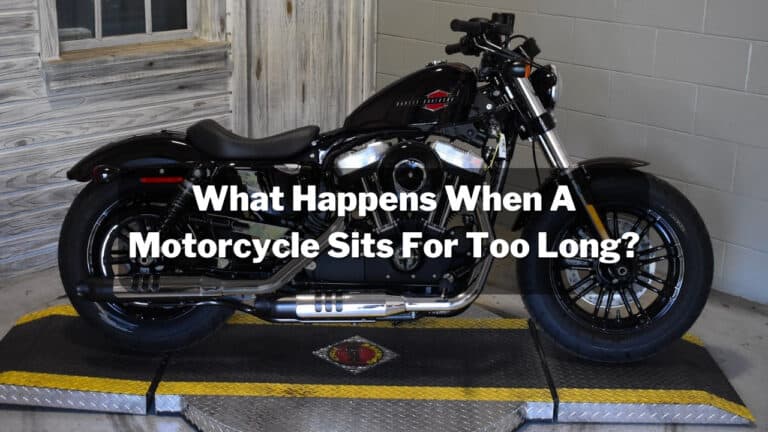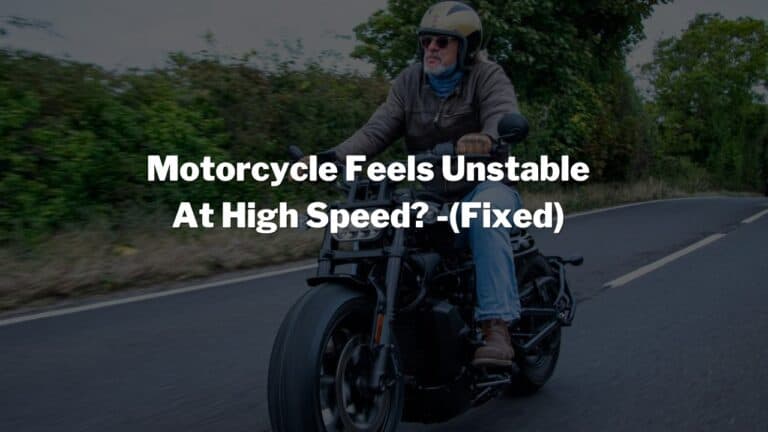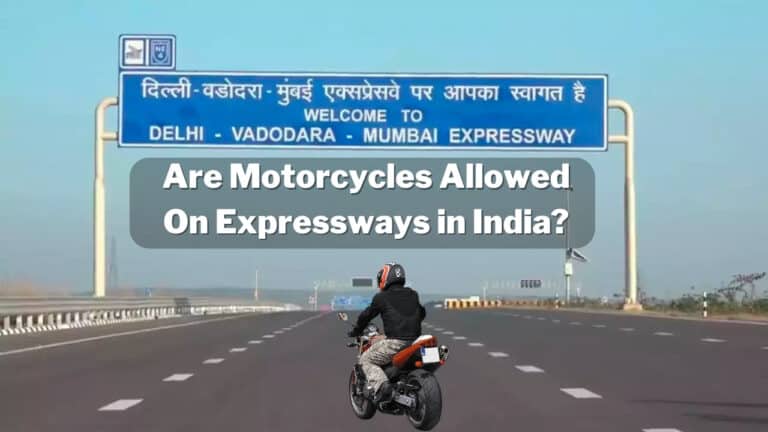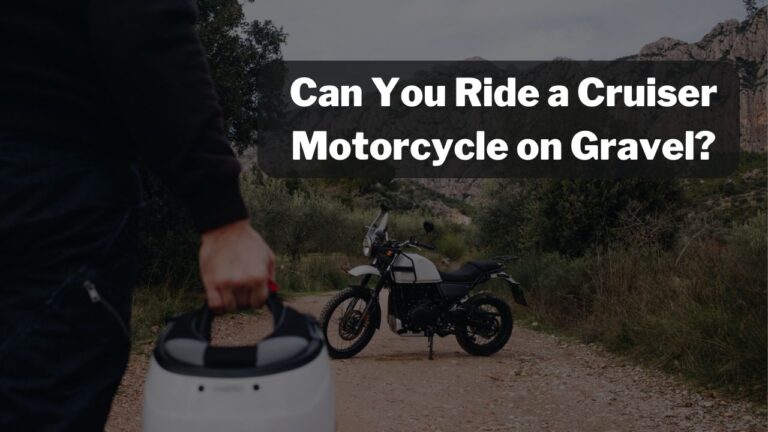Can You Jumpstart A Motorcycle With Car?- (Yes, But..!)
If you’ve stored your motorcycles in winter without disconnecting the battery terminals, you may face a starting problem. It happens because electronic devices like theft control, ECU, ABS, etc., will slowly drain the battery charge.
When you take out your bike after winter, you need to jumpstart your motorcycle and idle it for a few minutes to charge the battery.
So, can you jumpstart a motorcycle with a car battery? You can jumpstart your motorcycle with a car or truck battery. You can even use an inverter battery to jumpstart your motorcycle because the voltage output of these batteries is almost the same as that of your motorcycle battery. But ensure that your car engine is turned off while jumpstarting the motorcycle. Because the current output from the car charger is higher when the engine is started, and it can damage the electrical circuits of your motorcycle.
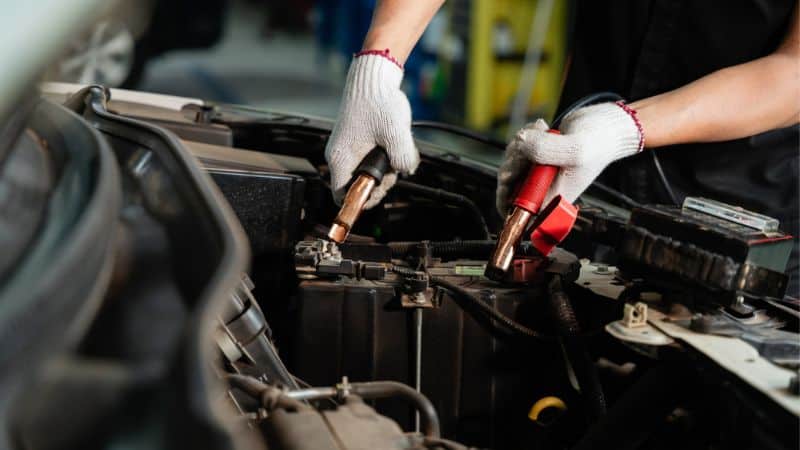
Table of Contents
Can a Car Jumpstart a Motorcycle?
The size of a car battery is more significant than a motorcycle, but the voltage difference across both terminals is the same. Both cars and motorcycles have 12 volts DC batteries, but bigger-size batteries can hold the charge for longer durations.
So, can a car jumpstart a motorcycle? Technically, a car battery can jumpstart a motorcycle because both work on 12 volts of DC. However, ensure that your car engine is off when jumpstarting because the current output from the car alternator is higher (13.6 to 14.2 volts) than the motorcycle, which can damage the electrical system.
When you jumpstart your motorcycle with a car battery, ensure the car’s engine is turned off. Also, you prefer to connect the positive terminals first because you may notice an electric spark if your negative terminal is already connected.
How To Jumpstart a Motorcycle with a Car?

Is your motorcycle not starting? A dead battery could be a reason, and you can jumpstart your motorcycle with a car. But your battery is not the only reason your motorcycle is not starting. So, before jumpstarting, first, ensure that the problem persists with your battery only.
Ensure your motorcycle has sufficient gas and the ignition switch is turned on. Also, ensure that your motorcycle side stands and kill switch buttons are in the correct position. After that, inspect your fuse box and ensure the main fuse isn’t burnt.
If everything is perfect, it means your battery isn’t charged enough to start the engine. You can check the voltage difference across both terminals if you have a multimeter at home. If it’s below 12 volts, head over to jumpstart your motorcycle.
Here is how to jumpstart a motorcycle with a car battery:
Park your motorcycle near the car and open the car bonnet to locate the battery. Find the motorcycle jumper cable and ensure it is long enough to reach your battery.
Now, turn off your motorcycle and car ignition and connect the car battery’s positive terminal to the motorcycle battery’s positive terminal.
Once the positive terminals are connected, connect the negative terminal of the car battery first and then the negative terminal of the motorcycle’s battery.
First, we connect the jumper cable clamp to the car battery side to avoid an unintentional short circuit. If the positive wire touches the negative, the car battery will discharge, and you won’t be able to start your car engine.
After connecting the positive and negative terminals, charge your motorcycle battery for a few minutes. You don’t need to start the car engine because the motorcycle’s battery is smaller and can be charged without starting the engine.
After waiting for 3 to 5 minutes, turn on your motorcycle’s ignition key. Once all lights on the instrument cluster illuminate, start the bike.
If your motorcycle doesn’t crank within 2 or 3 seconds, turn off the ignition key and wait a few more minutes to charge the battery. Don’t try to start multiple times if your motorcycle isn’t cranking because every effort will discharge your motorcycle battery.
So, you better relax for a couple more minutes until your car battery juices up your motorcycle battery. Try again, and once your motorcycle engine is started, disconnect the jumper cables and idle your motorcycle for a few minutes to charge the battery.
Again, while disconnecting the jumper cable, disconnect the car battery’s negative and then the motorcycle end; then, disconnect the positive terminals to avoid an electrical spark.
Once you disconnect the jumper cables, turn on the car’s ignition key and start the engine for 3 to 5 minutes to charge your battery fully.
That’s it! Your motorcycle is successfully jumpstarted with your car battery. Now, you can enjoy your ride.
Is It OK to Jumpstart a Motorcycle With a Car?
As long as the car ignition is turned off, there is no issue in jumpstarting your motorcycle with a car battery – because both batteries work on 12 volts. However, car batteries have a high charge-holding capacity and amperage rating.
So, please don’t connect the motorcycle battery for too long; otherwise, it will damage the electrical circuit and accessories. If no other option is left, then only jumpstart your motorcycle with the car.
Things To Avoid While Jumpstarting A Motorcycle With A Car
There are a few things you need to keep in mind while jumpstarting a motorcycle with a car battery:
- Ensure that your car and the motorcycle ignition key are turned off.
- Use a good-quality motorcycle jumper cable to ensure the wire is not broken or frayed.
- Connect the positive terminal of the car side first and then the motorcycle battery.
- Similarly, connect the negative terminal of the car battery and then connect the negative wire to an unpainted metal surface of the motorcycle to avoid a short circuit.
- Don’t start your car engine when the jumper cables are connected.
- Don’t let red and black wires touch each other.
Conclusion
Current flow from higher potential to lower potential. Hence, your car battery can recharge your motorcycle battery. So, follow the above-mentioned instructions carefully to jumpstart your motorcycle. While jumpstarting your bike, ensure the positive (red) wire doesn’t touch the negative (black) wire.
